Last year, Tableau introduced three spatial functions: Makepoint and Makeline (2019.2) and then Distance (2019.3). Then the spatial buffer calculation was released with Tableau 2020.1 and allows us to calculate the distance around a point location. In addition, no need to have a spatial file to use it, latitude and longitude columns will be enough! The buffer function creates a spatial object that will look like a circle mark on a map.
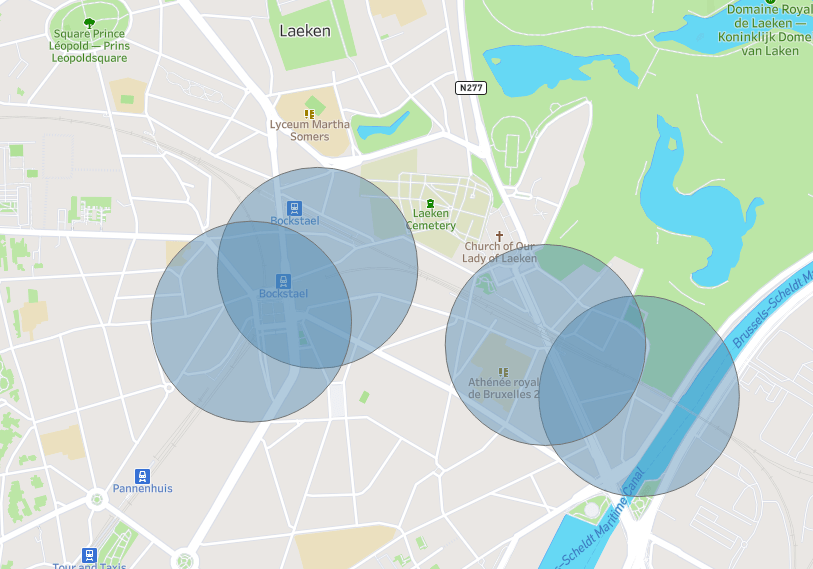
The buffer calculation has 3 arguments
- A spatial point
- A radius (number)
- A unit for the radius (miles, km, m or ft)
As I said above you don’t need a spatial file if you have the latitude and longitude columns in your dataset, you can use the Makepoint function to create a spatial point.
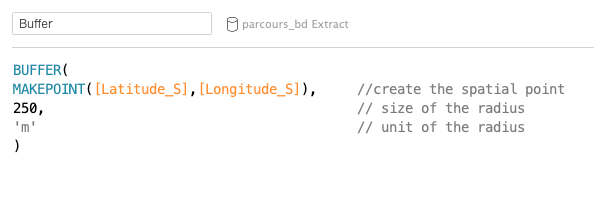
My objective is to plan a visit to a museum and see how many Street Art there is in the area. I have a dataset which contains the latitude and the longitude of the museums and the Street Art spots of Brussels.
First I created the spatial points for the street art spot with the Makepoint function. Then the buffer around the museums with the buffer function.
I drag the buffer field into the view, then I duplicate the longitude dimension. In the second mark card, I remove the buffer, I drag the street art spatial points and I obtain this map below.
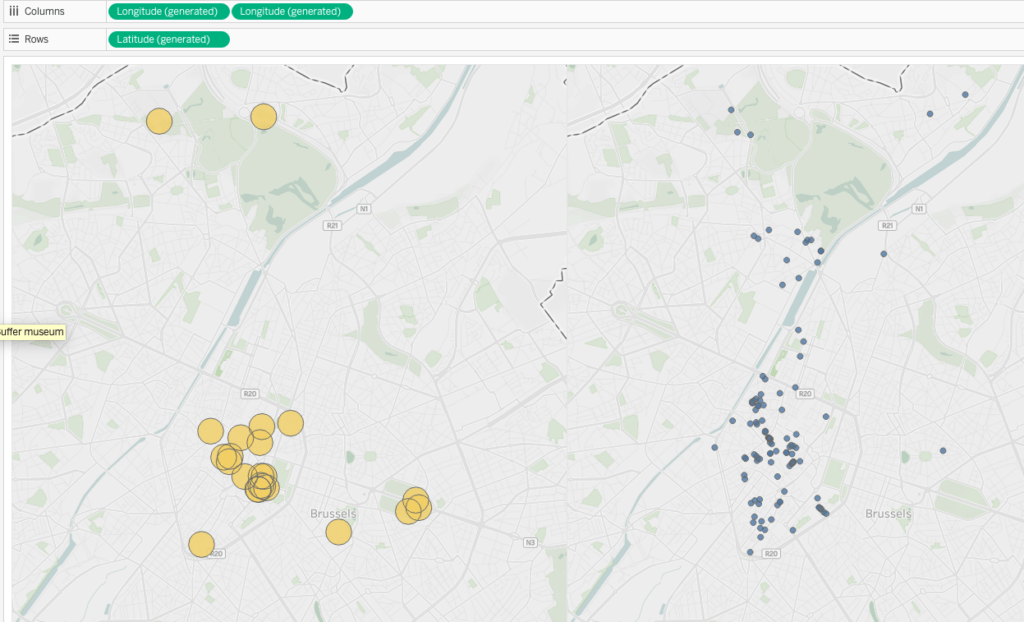
Next step is to transform this map into a dual axis to obtain the street art points overlapping the buffers of the museums.
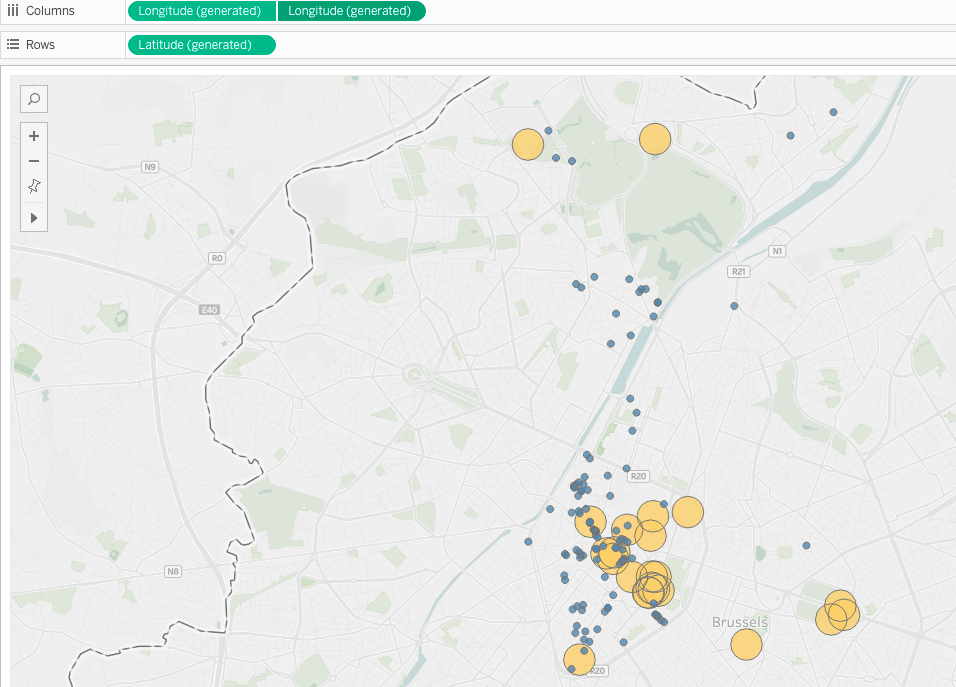
I defined the size of my buffer to 200 meters. For more flexibility you can use a parameter instead. First step is to create a radius parameter like this one below and incorporate it into the buffer calculation.
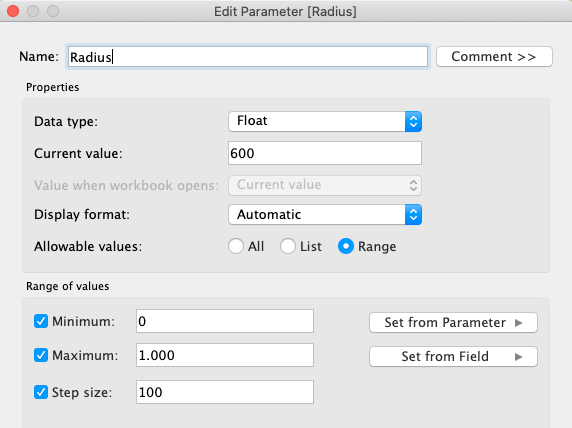

Dashboard example
If you are interested in Street Art and Brussels, have a look at this dashboard including the buffer calculation.
Do you want to learn more about Tableau or Alteryx? Do you want to use these tools to their full potential? Check out our trainings and consultancy services!


